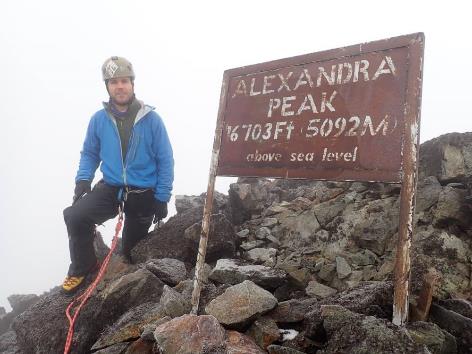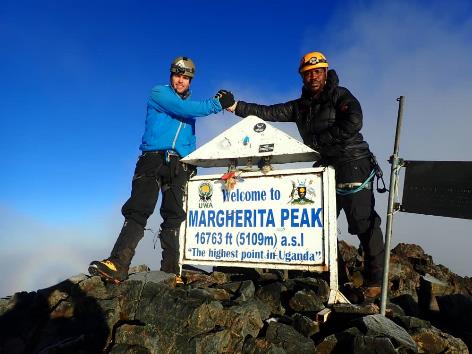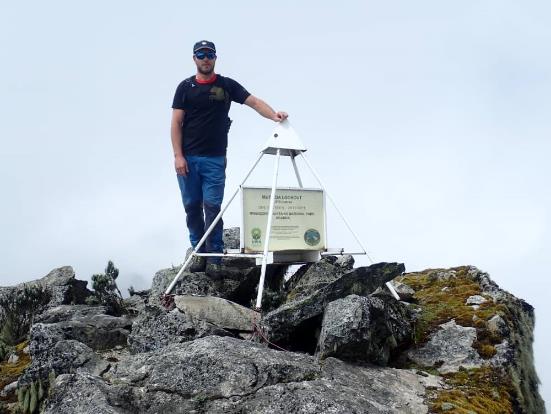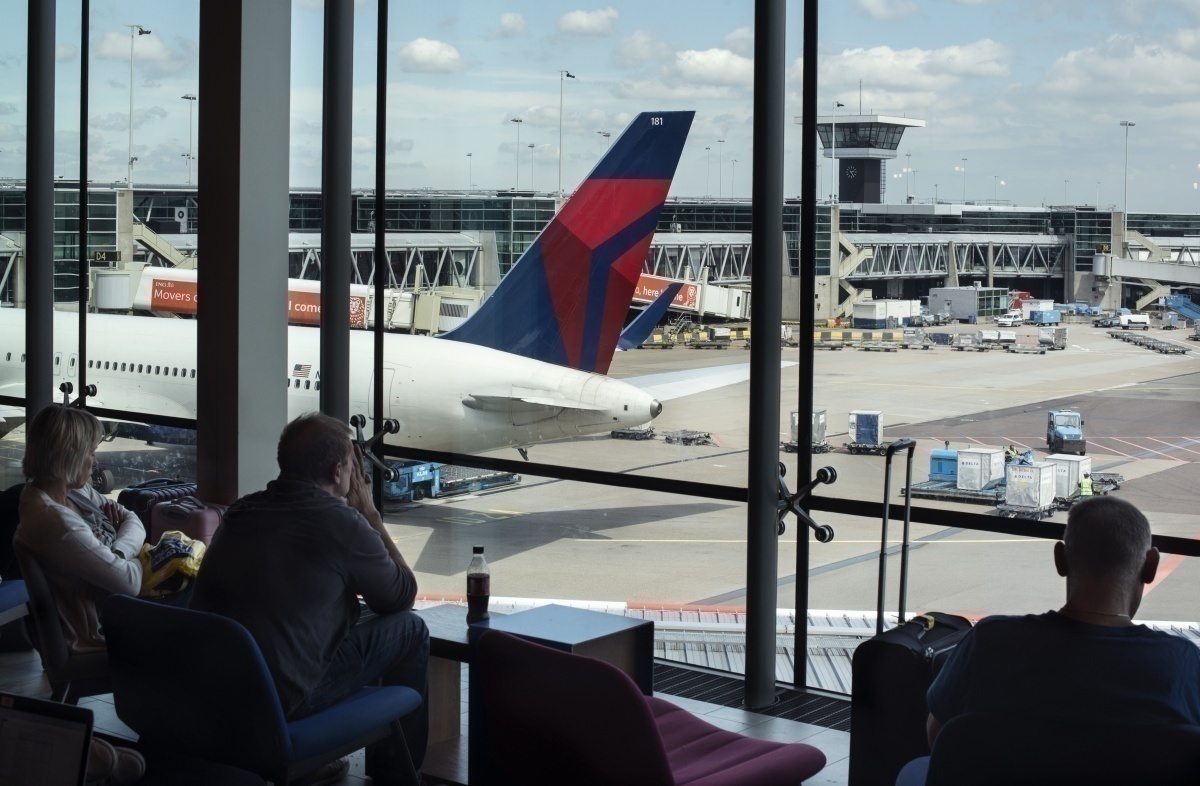Julian Wright (33 years) is no ordinary mountaineer, as well as being a Professional Mountaineer, Lead Guide/ Field Expert for over 15 years, largely in Kenya and South Africa, he is one of a few human beings to severally summit all the three highest points on Mt. Kenya, East Africa’s second-highest mountain i.e., Batian (5,199 metres or 17,057 feet) and Nelion (5,188 m or 17,021 ft) for over 50 times each and Point Lenana (4,985 m or 16,355 ft) for over 150 times- all this while setting some envious time records. He has also been an expedition leader on an Mt. Everest Base camp and Island Peak trek/climb in the Himalayas in 2017 and 2019.
Mentored and trained by well-known South African climber Keith James, Julian, at the age of 24 set up his own company, African Ascents Ltd. Before setting up African Ascents Ltd, Julian guided both trekking and technical climbing on Mt Kenya and Kilimanjaro as a freelance guide for some of the major adventure companies in the region i.e., Tropical Ice, Rift Valley Adventures and Savage Wilderness. This gave him chance to severally summit Kilimanjaro, the tallest mountain in Africa as well.
Since the creation of African Ascents in 2012 Julian has guided countless clients up Mt Kenya’s technical alpine summits of Nelion and Batian, via both the Southeast Ridge and North Face routes. Julian also continues to guide trekking trips on Mt Kenya, Kilimanjaro and Nepal. One of Julian’s more recent achievements was climbing the 680 meters long “Diamond Couloir’ on the south side of Mt Kenya, a route that was last climbed in 2005.
Julian’s mountaineering and climbing passion, has taken him all around the world, climbing routes all over Kenya, South Africa, Colorado, Utah, Nevada, Canada, the Alps, Himalayas, Southeast Asia and most recently the Rwenzoris.
He set off for the Rwenzoris on the 7th of July and on day one alone, he climbed from the Rwenzori Trekking Services Base Camp (1,450 metres) to Mutinda Lookout (3975m), then climbed to Bamwanjara Pass (4,450 meters), before descending to Hunwick’s Camp 3974 meters above sea level for the first night. This distance usually takes 4 days, but Julian did it in just one day. He also broke another record- he summited from Margherita Camp (4485 metres above sea level, to Margherita Peak, which is the highest point of the Rwenzoris at 5,109 meters above sea level in just two hours and 15 minutes (from 04 am to 06:15 am) and for the remaining four hours, summited Mt. Stanley’s three other tallest peaks, namely Alexandra Peak (5,090 metres), Albert Peak (5,087 metres), and Cheptegei (4,907 meters) and was off Mountain Stanley by 10:30 am. The next day, he would successfully summit Mt. Speke’s tallest peak- Vittorio Emanuele (4890 metres) and despite the snow and slippery frozen rocks, he

Courtesy Photo: Julian Wright, a professional mountaineer, lead guide/ field expert with over 15 years’ experience poses for a photo at the Alexandra Peak (5,090 metres), of Mt. Stanley’s four tallest peaks. Julian set a record, by climbing 8 peaks in 7 days. Over and above Alexandra, the three other Mt. Stanley peaks summitted by Julian are: Margherita, (5,109 metres), Albert Peak (5,087 metres), and Cheptegei (4,907 meters). He also summited Mutinda Lookout (3,975 metres); Mt. Speke’s tallest peak- Vittorio Emanuele (4890 metres) as well as Iolanda Peak, (4,175 metres) the tallest peak on Mt. Gessi and finally, Mt. Baker’s Edward Peak (4,844 metres).
made it in time to the Skull Cave ready to do Mt. Gessi (4,715 metres) the next day. But bad weather, slippery and wet rocks again stopped him from ascending Mt. Gessi but he didn’t give up, he instead climbed to the top of Mt. Baker (Edward Peak at 4,844 metres) in just 4 hours and was back at John Hunwick’s Camp by 5 pm. Usually, it takes six to eight hours for experienced and or fit climbers and up to 10 hours for slow climbers, for this climb. The next day he descended back to base camp, despite the bad weather and rain and was there in the afternoon. Then on the last day, he walked from Hunwick’s Camp, over Weismann’s Peak at 4,620 metres down to Forest View base camp on the morning of July 13th.
Altogether, Julian, who had set off to do 10 peaks in 8 days, managed to do 8 peaks in 7 days. He could not do the other two due to heavy rain and fog which made the hike unsafe and dangerous. Regardless, according to John Hunwick, 73, founder of Rwenzori Trekking Services (RTS), the company that arranged and facilitated the hike, this has never been done before. The best, he says, was 4 peaks in 8 days. And unlike most climbers, Julian carried his backpack with his luggage and climbing gear.
In this riveting interview, Julian Wrights details his newfound love for Mt. Rwenzori which in his own words, he describes as an “incredible resource” whose “sheer diversity” is “mind-blowing” and whose rare vegetations and “breathtaking” views left him wanting more.
01. First of all, tell us about yourself.
My name is Julian Wright. I work as a mountain guide in various East African mountains, mainly Mount Kenya and Kilimanjaro. This is my first time to the Rwenzoris. My main motivation to come here actually started about six years ago. I have been wanting to come here for a very long time, but finally, I’ve been able to come out and see what this beautiful mountain has to offer. I have a lot of clients and visitors we’ve had on our mountains in Kenya and Tanzania, who are really interested to come and see this part of the world, so it was really nice to come and see for myself and see what works for them. You guys really have an incredible resource here and it’s nice to be able to experience it.
I was a little bit constrained with time because obviously, this is our busy season but I really needed to come and see the mountain. Unfortunately, I had eight days to come and explore this huge mountain range. But we managed to climb quite a lot of peaks and it gives me a really good perspective of what there is to offer.
02. In specific terms, what is it that is different that you found with Mt. Rwenzori that has not been, or that you have not seen in the other parts of the East African mountains where we understand, you have been several times?
It (Mt. Rwenzori) is more of a range of mountains in comparison to what we’re used to. So, there are many peaks, and just the sheer ecological diversity, is mind-blowing. I mean, yes, we have a lot of species that are remarkably similar to the ones you have here in our mountains (Mt. Kenya and Mt. Kilimanjaro), but everything here seems to be three times as big. The leaves are bigger, the plants are bigger, everything is so lush, there’s so much life, and it is truly unique.

Courtesy Photo: Julian Wright (left) a Kenya-based Julian Wright, a professional mountaineer, lead guide/ field expert and Director of African Ascents Limited, a Kenyan outdoor adventure company and Enoch Bwambale (right) a guide with Rwenzori Trekking Services (RTS) at the Margherita Peak. Julian and Enoch made a record-breaking ascent of 8 peaks in 7 days, which, according to John Hunwick, 73, the founder of Rwenzori Trekking Services (RTS), the company that arranged and facilitated the hike, this feat has never been done before. The best, according to Hunwick, was 4 peaks in 8 days. And unlike most climbers who have to be assisted by porters, Julian carried his backpack with his luggage and climbing gear.
I’ve been guiding and hiking, and I’ve been in the outdoors business for a very long time, but the vastness of the Rwenzoris is just breathtaking. I mean, you go into some areas, and you really feel like, it feels very remote. It feels almost untouched, in a way. Starting at the bottom, walking up through the forests, going through the bamboo, going through the area where there are mostly rosewoods and you start seeing a lot more heather, the ericas and then you get into this very, very strange landscape with plants that you probably don’t usually see- the lobelias, the giant groundsels and then you get into the zone where there’s very little vegetation, it’s very wet. Yes, the conditions can be quite harsh, but yeah, you adapt to it. And when you get up to the top, you have so many different mountains on the range itself and that is quite unique about your mountains.
03. In terms of birding, is there any bird species you’ve seen that perhaps you have not seen anywhere else?
Yeah, in terms of birding I have seen quite a few different species. I mean, in the last couple of hours, we’ve been staring up in the trees, and the guides know their birds so well, that I literally would just ask them, what is that calling, and somebody knew what it is. We have seen the Rwenzori Turaco, Rwenzori Batis, Rwenzori double-collared sunbird and several others. And we have been listening to the Red-chested cuckoos all the way down. There is very many of them. There is just so much happening, it’s very difficult to actually try and, you know, understand everything.
04. For someone who wants to come to the Rwenzoris, how prepared should they come?
That’s a really good question. There are, some big days, but because the trails have been so well managed, and the huts have been so well established that even for somebody who’s not incredibly fit, there are options in between. So, you can break the day up and take your time with it, which then allows you to acclimatize well, and it’s something that I think you’re very lucky with here. Because you have more ranges, this allows people more time to acclimatize. On our mountains in Kenya and Tanzania, the mountains, are very steep, so you really have to struggle to slow people down. Whereas here, there is more distance, so people get to acclimatize better.
05. Given your well-grounded mountaineering experience in Africa and beyond, what do you think needs to be done to improve the experience in the mountains?
Well, I guess it all comes down to the type of clients you have. We have three different specifications where we are— to cater for the different markets. So, we have a very budget package, you have a package in between and then we have a very high-end package; the high-end package makes someone feel amazingly comfortable- a thick mattress, a warm shower in the evening etc., all those things we try and cater for. But as far as infrastructure goes, I’m sure there are lots of small things that maybe I didn’t notice, or I didn’t see, but to be honest, I think you’re doing a really good job here.
What Uganda Wildlife Authority (UWA) can do to increase tourism in this part of the world is, join forces with the various agents in the different countries on the different continents. I think working with agents closely, really does help sell packages. You can then create packages that are more bespoke to the particular clientele. So, for example, you can have a very budget package for people who can’t afford so much; you can then have a slightly high-end package for people who want a little bit more comfort. And then for the people who want all the comforts, they are used to in their own home, you can then create a package for those people. If you work with those agents, you can create a package that suits them, I think that would really benefit everybody in the chain, because for example, with the very high-end package, you employ more people to carry more things up the mountain. The more people you can employ, the better it is for everybody in the community.
06. What is your message to other climbers and visitors who are trying to climb the Rwenzoris?
My message to other guides and visitors coming to the Rwenzoris is to plan your trips, so you have lots of time so that you can really get a sense of the mountains. You can acclimatize well, which then allows you to enjoy the mountain a lot more. And then plan it so that you have a bit of time after your trip so that you can see some of the other national parks lower down and enjoy some of the wildlife. There’s just so much to do here, I think you need to allow for enough time to be able to see some of it.
07. Comparing the glaciers at the top of Rwenzori, how does it compare with other mountains that you have been to? Any notable differences especially with the other mountains with glaciers?
The glaciers on the Rwenzoris are very unique. They are a lot bigger than any other glaciers in East Africa. Kilimanjaro has several very thick glazes, but they do not have as many as you have on the Rwenzoris. I think there’s so much moisture coming up from the forests and the
area around the Rwenzori that you get a lot more snowfall and a lot more rainfall and the glaciers are holding steady.
Unfortunately, the glaciers on Mt. Kenya are virtually gone. We’ve got a very small section left. Because of the effects of whether you want to call it global warming or climate change or just general warming of the planet- the glaciers are receding quickly. Glaciers are certainly a massive attraction in beauty on our East African mountains. So, if you’re out there and you’re not yet decided or sure if you should come, you should come as soon as you can, because the glaciers are going fast.

Courtesy Photo: Julian Wright on top of the Mutinda Lookout 3975 metres on Day 1 of his record-breaking 7-day trek that saw him summit 8 peaks.
About Guide2Uganda
Guide2Uganda (www.guide2uganda.ug) is the most comprehensive source of travel information about Uganda that exists on the web, with more content on its cities & towns, accommodation, attractions, events, museums and galleries than any other online guide that currently exists for Uganda; as well as being a dynamic travel news and events driven site with fresh content added daily.
According to WeFollow & Peer Index (that measure online influence), we are among the most influential online media organizations in Uganda. Guide2Uganda was also awarded ‘’Best Destination Website in Uganda’’ by Jumia Travel Uganda in the 2018 Africa Travel Awards.
Share your travel stories & photos with the world via email: info@guide2uganda.ug




